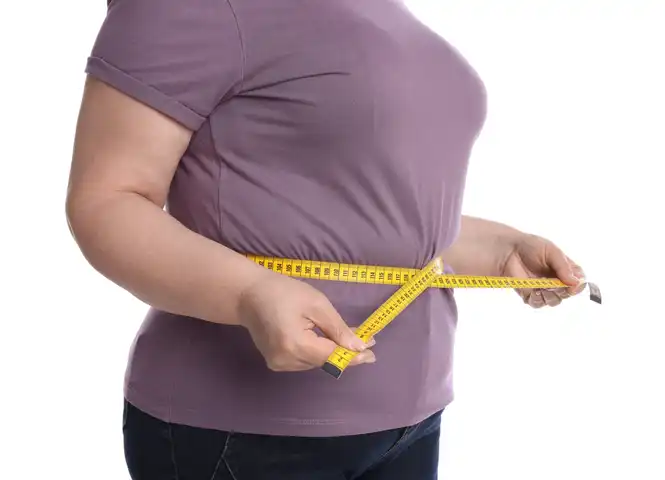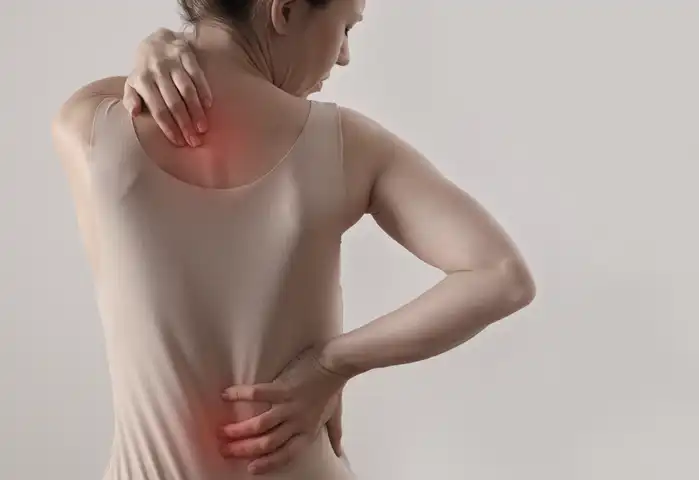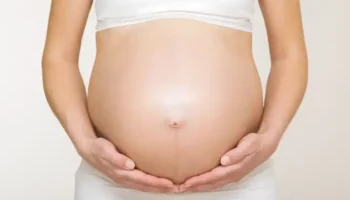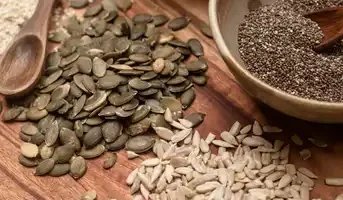Many women in their 40s and early 50s begin to notice unexpected physical symptoms that weren’t part of their lives before—including back pain with perimenopause. While hot flashes and mood swings are more commonly discussed, musculoskeletal issues like back pain are surprisingly prevalent and often overlooked.
This article takes a deeper dive into why back pain becomes a frequent complaint during perimenopause and what can be done about it.Need a refresher on perimenopause? Explore our foundational articles on pre-menopause and menopause and perimenopause symptoms for a full understanding.

Is Back Pain with Perimenopause Common?
Yes—and you’re not imagining it. According to a study published in Maturitas, a peer-reviewed journal on midlife health, more than 60% of women experience musculoskeletal pain during the menopausal transition, with the lower back being one of the most commonly affected areas. (Source)
This pain can be dull, achy, sharp, or even radiate down the legs, depending on the cause. The experience varies, but the underlying reasons often trace back to the hormonal shifts of perimenopause.
Why Does Back Pain with Perimenopause Happen?
Let’s break down the physiological and lifestyle factors that make back pain more likely during this phase.
1. Hormonal Changes and Inflammation
During perimenopause, estrogen levels drop and fluctuate unpredictably. Estrogen plays a critical role in modulating inflammation and pain perception. Lower estrogen can:
- Increase systemic inflammation.
- Reduce muscle elasticity.
- Heighten pain sensitivity (due to its effect on neurotransmitters like serotonin and dopamine).
- Slow muscle repair and recovery.
This can result in tight, fatigued muscles and a greater risk of strain, especially in the lower back and hips.
2. Joint and Bone Degeneration
Back pain with perimenopause often involves joint stiffness or early signs of degenerative disc disease. Estrogen helps protect joint cartilage and bone density. Without it, the spine becomes more vulnerable to wear and tear. According to the North American Menopause Society, bone loss can begin years before menopause is complete, increasing the risk of spinal compression or disc problems.
Over time, these changes can manifest as:
- Achy or stiff lower back in the morning.
- Increased soreness after physical activity.
- Pain radiating to the hips or thighs.
3. Muscle Weakness and Core Instability
Many women notice changes in muscle tone during perimenopause. Less activity due to fatigue or mood changes, combined with hormonal effects on muscle mass, can weaken the core and lumbar support muscles. This instability contributes significantly to back pain, especially when paired with increased stress on the spine from weight gain or posture changes.

It’s Not Just Aging: The Real Science Behind Back Pain with Perimenopause
It’s easy to dismiss back pain with perimenopause as a symptom of “just getting older,” especially since musculoskeletal aches tend to become more common with age. But this explanation misses the mark. While aging can certainly play a role, back pain that appears or intensifies specifically during the perimenopausal transition often has distinct, hormone-related biological causes that differ from general age-related wear and tear.
Let’s explore these in more depth:
Fluctuating Estrogen Levels: A Catalyst for Pain
Estrogen is more than just a reproductive hormone—it’s a key player in musculoskeletal health. It helps regulate:
- Collagen production, which maintains the elasticity and strength of connective tissues.
- Muscle mass and strength, helping to stabilize and support the spine.
- Pain perception, via its role in modulating neurotransmitters like serotonin and endorphins.
- Inflammatory responses, keeping systemic inflammation in check.
When estrogen levels start to decline or fluctuate unpredictably (as they do during perimenopause), women may become more susceptible to:
- Increased inflammation in joints and muscles
- Heightened sensitivity to pain, even from minor strains or postural misalignments
- Slow muscle recovery and increased fatigue, leading to more stiffness and discomfort
This hormonal chaos can result in chronic lower back pain, upper back tightness, or even pain radiating from the spine into the hips or legs.
Bone and Joint Vulnerability
As estrogen declines, bone metabolism shifts dramatically. Estrogen helps maintain bone density by balancing the rate of bone resorption (breakdown) and formation. Without its protective influence:
- Bones begin to lose mass more rapidly.
- The vertebrae in the spine become more susceptible to compression, microfractures, and degenerative changes.
- Intervertebral discs—the shock absorbers between spinal bones—lose hydration and flexibility, reducing their cushioning ability.
These changes can lead to:
- Degenerative disc disease
- Osteoarthritis of the spine
- Compression fractures, especially in women with early-onset osteopenia or osteoporosis
These conditions manifest as stiffness, deep aches, or difficulty standing and walking for long periods.
Muscular Imbalances and Core Weakness
Muscle tone and distribution also shift during perimenopause. Estrogen plays a subtle role in muscle protein synthesis, and declining levels can lead to:
- Loss of lean muscle mass (sarcopenia)
- Reduced muscle strength and coordination
- Increased fat accumulation, especially around the abdomen and lower back
These changes can cause a domino effect on spinal health:
- The core muscles (abdominals, pelvic floor, obliques, and back extensors) weaken.
- The spine loses its natural support system, increasing the risk of poor posture and spinal strain.
- Compensatory overuse of surrounding muscles (like those in the neck and shoulders) can lead to tension and secondary pain.
Understanding this distinction is critical. When women realize that their back pain with perimenopause is not just aging but a direct result of hormonal, structural, and muscular changes, they’re more likely to seek proper treatment—and stop accepting pain as an inevitable part of midlife.
Other Contributing Factors

Weight Gain and Posture
The hormonal rollercoaster of perimenopause can lead to fat redistribution, especially around the abdomen. Extra abdominal weight pulls on the lower back and shifts your center of gravity, straining lumbar discs and muscles.
Poor posture—especially from working long hours at a desk or on devices—compounds this issue. It’s a perfect storm for back pain.
Stress, Anxiety, and Sleep Disturbances
Sleep issues and emotional stress are major triggers of muscle tension. Chronic sleep deprivation (also common in perimenopause due to night sweats and anxiety) impairs the body’s ability to heal inflammation and repair tissues. Cortisol, the stress hormone, may also rise during this phase, contributing to muscle tightness and back stiffness.
How to Manage Back Pain with Perimenopause
Here are some research-backed strategies to reduce or prevent back pain associated with perimenopause:
1. Strength Training and Core Stability
Studies show that targeted core and back strengthening can dramatically reduce chronic back pain. Focus on:
- Pilates or yoga (great for posture and core)
- Light resistance training
- Daily stretching routines
2. Anti-Inflammatory Diet
Eating foods rich in omega-3 fatty acids, antioxidants, and magnesium can help control inflammation. Try incorporating:
- Fatty fish (salmon, sardines)
- Leafy greens
- Nuts and seeds
- Turmeric and ginger
3. Hormone Therapy or Alternatives
In some cases, Hormone Replacement Therapy (HRT) may alleviate musculoskeletal symptoms of perimenopause. Talk to a healthcare provider about options. There are also natural alternatives, like phytoestrogens (found in flaxseed, soy, etc.), that may help support hormonal balance.
4. Posture and Ergonomics
If you’re spending hours working at a desk, proper ergonomic support is essential. Consider:
- Lumbar cushions
- Standing desks
- Correct monitor height and keyboard placement
5. Stress Management
Since stress is a major contributor to tension-based pain, techniques like meditation, deep breathing, and cognitive behavioral therapy (CBT) can be surprisingly effective.
When to See a Doctor
If your back pain:
- Persists beyond a few weeks
- Is severe or worsening
- Is accompanied by numbness or radiating leg pain
…it’s time to consult a medical professional. It could indicate more serious conditions like sciatica, spinal arthritis, or disc issues that require specific intervention
Final Thoughts
Back pain with perimenopause is real, common, and deserves more attention. It’s not just a nuisance—it’s a sign your body is undergoing significant change. By understanding the hormonal, muscular, and lifestyle factors involved, you can take control of your symptoms and get back to living more comfortably. If you’re struggling with persistent symptoms, don’t suffer in silence. Knowledge, movement, and proper support can make a world of difference
Frequently Asked Questions About Back Pain with Perimenopause
1. What causes back pain with perimenopause?
Back pain with perimenopause is mainly caused by hormonal fluctuations—especially the drop in estrogen. This affects inflammation, muscle tone, bone density, and joint stability. As a result, women may experience increased stiffness, spinal discomfort, or even degenerative changes in the lower back.
2. Is back pain a common symptom of perimenopause?
Yes. Studies show that more than 60% of women experience musculoskeletal pain during the menopausal transition, with the back being a key area affected. It’s a legitimate and common symptom—not just a sign of aging.
3. How can I relieve back pain during perimenopause?
Effective treatments include strength training (especially for the core), maintaining good posture, following an anti-inflammatory diet, and discussing hormone therapy options with a healthcare provider. Stress management and ergonomic support at work also help significantly.
4. When should I see a doctor for back pain with perimenopause?
If your back pain lasts more than a few weeks, worsens, or includes numbness, tingling, or leg weakness, consult a doctor. These could be signs of disc problems, nerve involvement, or osteoporosis-related fractures.
5. Can hormone therapy help with back pain during perimenopause?
Yes. For some women, Hormone Replacement Therapy (HRT) can reduce musculoskeletal pain by stabilizing estrogen levels. However, it’s not suitable for everyone, so speak with your doctor about risks, benefits, and alternatives like phytoestrogens.







